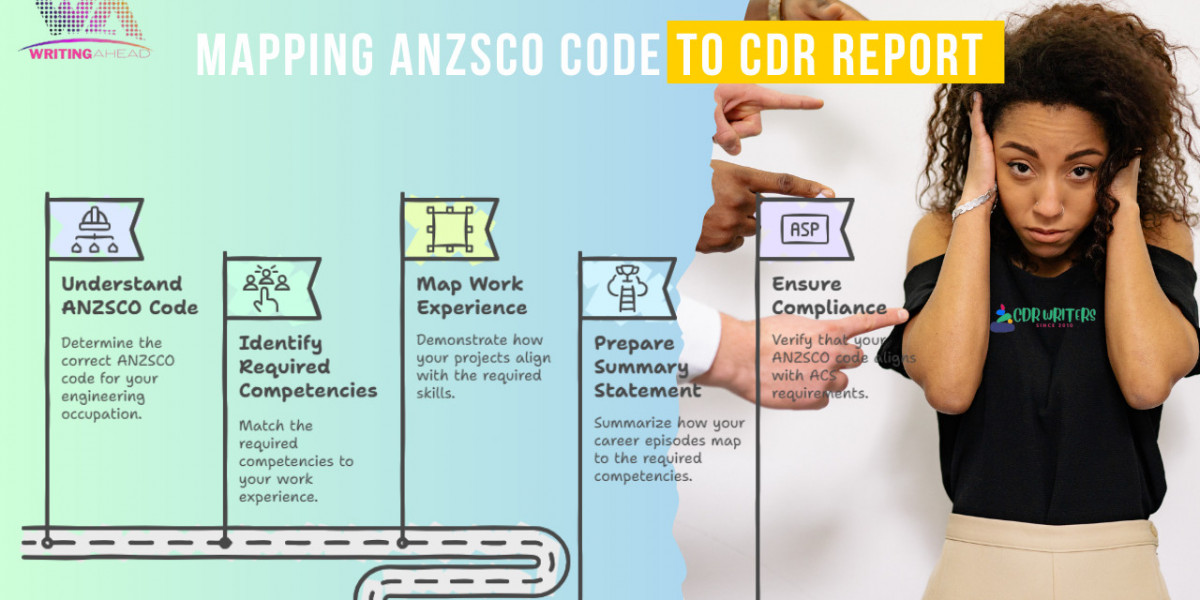If you are an engineer from a non-accredited country planning to migrate to Australia, you've likely come across the term CDR—short for Competency Demonstration Report. For many professionals, this document is a non-negotiable requirement in the migration and skills assessment process.
But is a CDR Report Writing mandatory for all engineers?
Yes, the CDR is mandatory for engineers who are applying through Engineers Australia and whose qualifications are not accredited under international agreements.
In this comprehensive guide, we’ll explore:
What a CDR is and who needs it
Why Engineers Australia requires it
Data on visa approvals and skill assessments
CDR exemptions and alternatives
Why submitting a high-quality CDR can determine your migration success
What Is a Competency Demonstration Report (CDR)?
The CDR is a technical and personal portfolio submitted to Engineers Australia (EA) as part of their Migration Skills Assessment (MSA) process. It is used to assess whether your qualifications, skills, and engineering experience match the standards expected of an Australian-trained engineer.
A complete CDR includes:
Three Career Episodes (CEs) – Narratives detailing specific engineering experiences
Summary Statement – A matrix aligning your experiences with EA’s competency elements
Continuing Professional Development (CPD) – A log of training, learning, and skills development
Curriculum Vitae (CV) – Structured résumé of your engineering background
Who Must Submit a CDR?
A CDR is mandatory if you:
Hold a non-accredited engineering degree (e.g., from India, Pakistan, Bangladesh, UAE, Philippines)
Completed your qualification in a country not part of the Washington, Sydney, or Dublin Accords
Want to apply for a skilled visa under ANZSCO engineering occupations (e.g., Civil Engineer 233211)
In contrast, engineers with accredited qualifications under the following accords may not need a CDR:
| Accord | Level | Example Countries |
|---|---|---|
| Washington Accord | Professional Engineers | USA, UK, Canada, South Africa, Singapore |
| Sydney Accord | Engineering Technologists | Ireland, Hong Kong, New Zealand |
| Dublin Accord | Engineering Associates | South Africa, Ireland, Korea |
Data Point: According to Engineers Australia’s Migration Skills Assessment report, over 65% of all skill assessment applicants are from non-accredited countries, with India and the Philippines leading the list. These applicants are required to submit a CDR.
Why Is the CDR Required?
Australia has high standards for engineering practice. The CDR is used to:
Evaluate your technical competence
Ensure you meet ethical and professional standards
Align your education and experience with Australian engineering frameworks
Protect the public and employers by verifying foreign-trained engineers
The CDR replaces the need for formal accreditation in countries where educational systems may differ from Australian standards.
What Happens If You Don’t Submit a CDR?
If your degree isn’t accredited and you do not submit a CDR:
Your skills assessment will be rejected
You cannot apply for visas that require EA skills recognition (e.g., subclass 189, 190, 491)
Your migration process will be delayed or terminated
Fact: Engineers Australia processes over 12,000 CDR applications each year, and rejection rates for poorly prepared or plagiarised reports remain around 20–25%. Quality matters.
Who Is Exempt from Submitting a CDR?
You don’t need a CDR if:
Your qualification is listed on the Accredited Qualifications List from an Accord country
You are applying under a Recognised Graduate Pathway (e.g., through an Australian university)
You hold Chartered Professional Engineer (CPEng) status from an internationally recognised body that EA accepts
But even in these cases, Engineers Australia may request additional documentation, especially if your degree or experience is outdated or inconsistent.
CDR in Skilled Migration: Real Impact
Your CDR is not just a document—it determines your eligibility for:
Skilled Independent Visa (subclass 189)
Skilled Nominated Visa (subclass 190)
Skilled Work Regional Visa (subclass 491)
These visas are part of the General Skilled Migration (GSM) program, which prioritises engineers in demand. According to the Australian Department of Home Affairs:
Over 7,800 skilled engineering visas were granted in the 2022–2023 program year
Engineering occupations are consistently featured in the Medium and Long-Term Strategic Skills List (MLTSSL)
Without a positive CDR-based assessment, you’re not eligible for these opportunities.
How Do You Write a CDR? (Brief Overview)
Writing a CDR involves:
Selecting three relevant projects from your career
Writing Career Episodes that showcase your technical skills
Completing a Summary Statement mapping your competencies
Logging your CPD activities over the past few years
All content must be:
Original (no plagiarism)
Written in formal, first-person English
Aligned with EA’s competency elements
Tip: Many applicants use professional services such as WritingAhead.com, CDR Writers.io, or RplWritingServices.com for support with structure, formatting, and review.
CDR Quality and Approval Rates
Engineers Australia assesses CDRs using strict benchmarks:
Technical depth
Ethical compliance
English proficiency
Professional standards
Success Rate Insight: Applicants who prepare a well-written, original CDR based on real experience have an approval rate of over 90%. Poorly written or copied reports face rejection or delays.
Final Verdict: Is CDR Mandatory in Australia?
Yes, a CDR is mandatory for engineers who hold overseas qualifications not accredited under international accords and wish to have their skills assessed by Engineers Australia.
If you're from a non-accredited country and want to apply for skilled migration, the CDR is your primary tool to prove your engineering competence and start your journey toward a successful career in Australia.
In Summary:
| Scenario | Is CDR Required? |
|---|---|
| Degree from India, Pakistan, UAE, or Philippines | Yes |
| Degree accredited under Washington Accord | No (in most cases) |
| Graduate from an Australian university | No |
| Applying as Engineering Technologist from a non-accredited country | Yes |
| Seeking GSM visa (189, 190, 491) without EA recognition | Not eligible |
If your CDR is the key to unlocking your Australian engineering future—make sure it's done right, done ethically, and done with care.









